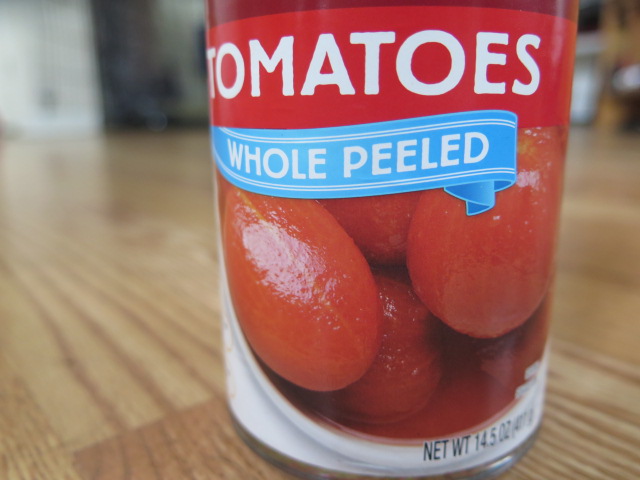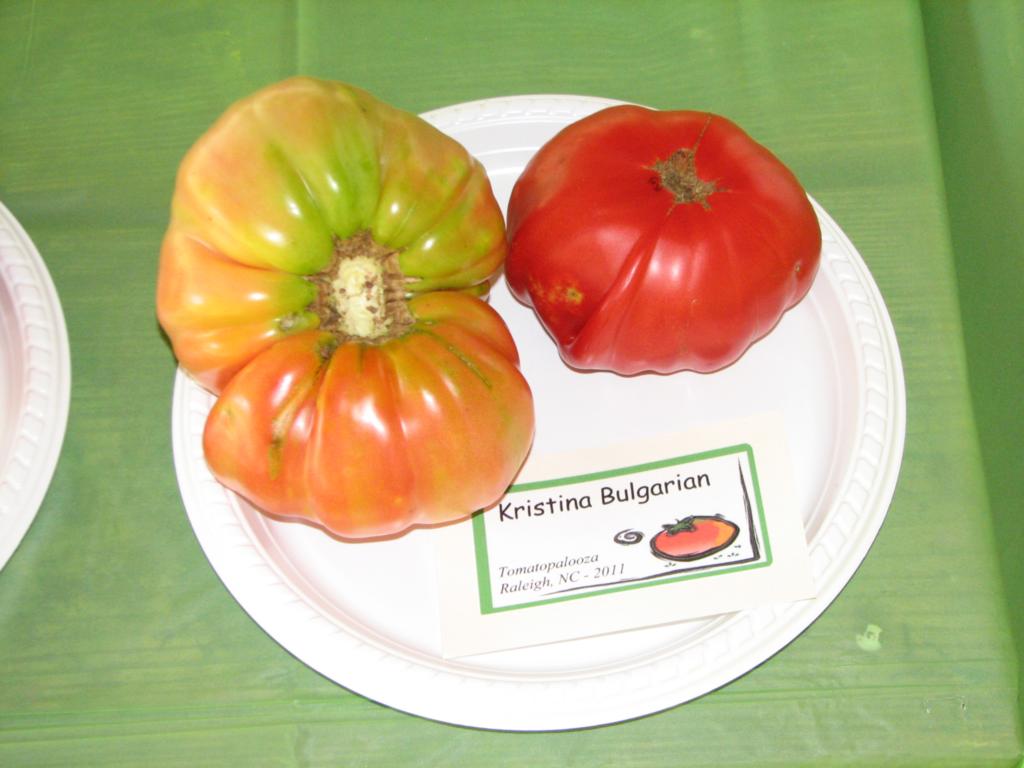 By Ciranna Bird, CSFA Member and Medical Writer for Farmers.
By Ciranna Bird, CSFA Member and Medical Writer for Farmers.
Tomato season is my favorite time of year. From July through September, my vision, taste buds, and tactile senses are delighted with tomatoes of all sizes, shapes, and colors. Visit any farmers market and you will find organic, juicy, flavorful tomatoes which have been grown from seeds that have been preserved over the years by local farmers. These heirloom tomatoes have enticing names such as the Cherokee Purple, Anna Banana Russian, Tasmanian Chocolate, and Brandywine.
My favorite way to eat organic heirloom tomatoes is raw and unseasoned. After washing them I pop the grape-sized tomatoes in my mouth like popcorn, or sprinkle them in my cereal (yes, breakfast cereal!). For the larger size tomatoes, I eat them like I would eat an apple, with tons of napkins on hand to handle their juices.
But when I was asked to write an article about home-canning tomatoes, I was at a loss. My only experience with canned tomatoes is the metal containers of stewed tomatoes, pre-made tomato sauce, and tomato soup that I buy from the grocery store. I enjoy their convenience and affordability. However, canned tomatoes taste good only after they have been mixed with a lot of other ingredients to make dishes like stuffed peppers, chili, and lasagna. Why would I ruin a beautiful tasty heirloom tomato by putting it into a can?
To learn more about the taste of home-canned tomatoes I reached out to Craig LeHoullier, a North Carolina gardener, author of The Epic Tomato and co-organizer for Tomatopalooza™, a tomato tasting event which was held annually for 10 consecutive years. Craig explained that the intense flavors of home grown heirloom tomatoes produce a great tasting canned product. The texture of the tomato changes but the flavor remains.
“We’ve kind of been conditioned to enjoy pretty ordinary tasting canned tomatoes – just like we’ve been conditioned to accept the awful taste of ‘grocery store’ tomatoes,” said Craig.
Well, that’s great news that a home canned organic heirloom tomato will taste better than a store-bought canned generic tomato. But if I’m going to buy a canner, glass jars, and two piece lids and go through the trouble of learning how to home-can fresh fruits wouldn’t there be much more exciting things to can? It seems easier to continue buying bland canned tomatoes at my grocery store…
In an effort to give home-canning tomatoes a fair chance, I began researching the types of tomatoes and farming practices that go into making commercially canned tomato products. Tomatoes destined to be commercially-canned are called processing tomatoes. These Roma-sized tomatoes are bred to have thick skins with a dense, non-juicy, mealy consistency.
Despite the Italian-themed colors on the outside of store-bought canned tomatoes, the majority of U.S. canning facilities and tomato fields are in California. According to the Commercial Tomato Production Handbook (B 1312), after California, Indiana, Michigan, and Ohio are other major producers.

Farming operations under contract with tomato processors have a narrow list of approved processing tomato varieties to choose from. In 2005, more than half of the California processing tomatoes belonged to only five varieties (Hartz et al, Processing Tomato Production in California). The reason for the lack in seed diversity is that the goal for processing tomatoes is high yields, disease resistance, uniform size, shape and color, as well as the ability to have 90% of the tomatoes in the field ripen at the time of harvest..
CFSA members believe that food you can trust starts at the source – with the farmer. Join CFSA’s Perennial Givers Guild and your monthly donation of any amount will help us grow local & organic from seed to plate.
U.S. farming operations grow processing tomatoes on a large scale, where tomatoes are mechanically harvested, and collected into bins that can hold between 800 and 1,200 pounds of fresh tomatoes. The fertilization, weed management and pest managements vary among growers and can involve the use of fertilizers, herbicides and insecticides (Hartz et al, Processing Tomato Production in California). Canning tomatoes occurs in 55 gallon drums and often involves a lot of added sugar and salt.

I have to admit canning heirloom tomatoes at home is looking more and more attractive. But here’s the last selling point: by learning how to can local tomatoes you and I can play a vital role in reducing local crop loss and waste. Did you know there are times that it can be more expensive for farmers to harvest and sell their tomatoes than it is to leave them in the fields? This tomato loss happens when their supply is greater than the demand. And tomato waste has happened to the most enthusiastic tomato-eating customer. This occurs when the lovely tomatoes you have bought from your local farmer spoil before you have the chance to eat them.
But our heirloom tomatoes don’t have to spoil. By learning how to home-can tomatoes you and I will be able to preserve them at the peak of the freshness. Read Part 2 to learn how to can!
It is heartbreaking to see an heirloom tomato spoil. The demise of a delicious plump and firm tomato may begin with some parts of the fruit becoming darker than the rest. You may see white, green, or black-colored mold growing on the surface. The consistency gets mushy. Other tell-tale signs of a rotting tomato are when the skin becomes puckered and wrinkled, an oily looking liquid begin leaking out from the bottom of the tomato, and the smell becomes rancid and unpleasant.
In summary here are five reasons to home-can local organic tomatoes:
- Support local farmers in North Carolina and South Carolina: 90% of domestically commercially-canned tomatoes are grown and processed in California (Hertz et al. Processing Tomato Production in California)
- Promote seed diversity and tomato varieties: Unlike processing tomatoes, heirloom tomatoes are selected for their diverse sizes, shapes and colors.
- Reward small-scale organic farming practices: Choose to home-can tomatoes from local farmers that manage their pests and weeds organically.
- Improve the flavor of canned tomatoes and remove unhealthy ingredients: Commercially-canned tomatoes often come with excess amounts of sugar and salt and don’t have the delicious flavors of heirloom tomatoes.
- Prevent local heirloom tomatoes from being wasted: Read “Part 2: Home-canning Heirloom Tomatoes – a step-by-step guide with safety tips!” to prevent crop loss and food waste.
Ciranna Bird helps local farmers educate their customers on the health benefits related to small-scale pasture-based production of meat, dairy, and eggs. On July 21st, she will be presenting a workshop entitled “Protect your egg-laying hens and customers from Salmonella” at the Inter-Faith Food Shuttle. Registration is first come first serve. Information on her other speaking engagements, as well as her NC food blog, can be found at www.cirannabird.com.
References:
William Terry Kelley and George Boyhan. History, Significance, Classification and Growth. In: Commercial Tomato Production Handbook (B 1312). University of Georgia. http://extension.uga.edu/publications/detail.cfm?number=B1312#History Re-published on Feb 5, 2010. Reviewed on Jan 4, 2014. Accessed June 15, 2015.
Hartz T, Miyao G, Mickler J, LeStrange M, Stoddard S, Nunez J, Aegerter B. Processing Tomato Production in California. University of California. Division of Agriculture and Natural Resources. Pg. 1 http://anrcatalog.ucanr.edu/pdf/7228.pdf


